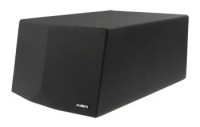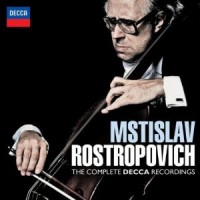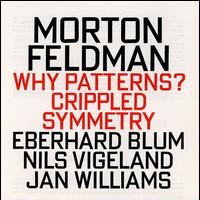The IPC Sound Power
|
[These comments appear simultaneously in StereoTimes.com.] Mike Silverton [June 2013.]
It doesn’t often happen that an audio journalist is among the first in his corner of the world to celebrate a remarkable product line. Stephen Yan in Singapore stole the march with his IPC Acoustic Energizer report, with Clement Perry’s addendum. Both can be fairly described as raves. My own AE remarks are likewise extravagant. I concluded with “This stuff leaves the premises over my dead body.” Time has done nothing to blunt my enthusiasm. So, in the spirit of charmed privilege, some thoughts about IPC’s Sound Power line conditioner, beginning with the how of comparison. Bearing in mind that in the Off position, depending on the room and whatever other conditions obtain, an Acoustic Energizer’s influence is said to linger from moments to days. As a bone-lazy sybarite, I have no wish to quantify that. Enough that my AE quintet has been off since yesterday. The plan is to play a disc I’m familiar with, remove my BlackNoise line conditioners as quickly as possible and install the Sound Power, likewise ASAP, in order to determine what the SP accomplishes on its own, followed by what differences the SP makes with my five AE units and Disc Energizer back in the fold. Our audio memories are short and unreliable – and available to prejudice. I’ll do my best to be fair. I began the morning of the Sound Power’s arrival by playing a Shostakovich string quartet I’d been listening to recently. Again, the Acoustic Energizers had been off for a tad longer than a day, but not removed from the room. Nor did I use the Disc Energizer. I should mention too that over a week ago I’d removed the three Acoustic Revive virtual grounds attached to my amps and CDP, not that that made much of a difference. Four Acoustic Revive room-treatment panels remain on the wall behind the system. They’re too beautiful to take down. (The impression that IPC knows what it’s doing persists with the Sound Power’s packaging: sturdy, cleverly designed and elegantly understated. These folks have no use for bling.) With the Sound Power installed and a few discs played, I perceived an effect similar to that of my five AE units, albeit to a slightly lesser degree. It did occur to me that were one to acquire a single IPC component, the Sound Power would be a good choice. It enhanced the stereo image’s dimensionality, vividness and dynamic finesse against a backdrop of utter silence. IPC has given the picotechnology behind its audio devices a street name: Euphoria. Immodest and often delusional self-promotion in the audio biz has a long and tiresome history. Here, not. “Euphoria” puts it nicely. With the five AE units and Disc Energizer back in play, applying the moment’s mot juste, this euphoric listener is having a hell of a time. Prior to the SP’s arrival, I had paired my AE units behind the speakers, with the fifth midfloor between me and the sound system. The Sound Power and four Acoustic Energizers at the system-side of the listening room struck me as an overabundance. I broke up the pairs by placing an AE unit on either side of my perch (a couch) and liked what I heard. Not on the order of you-could-have-knocked-me-over-with-a-feather, but a little better. I won’t embarrass myself or burden you with a detailed account of my obsessive-compulsive AE shufflings.
This IPC assemblage produces a remarkably vivid and therefore excruciatingly revealing effect. It does quite literally clear the air (see the website for more about that). Number 27 of a 50-disc compilation, The Decca Sound (Decca 478 2826), Ute Lemper / Berlin Cabaret Songs, recorded in 1996, reveals the singer’s upwardly-tipped mic against the Matrix Ensemble’s softer-sounding backup very much in their own space, the singer most decidedly in hers. Perceptions of this kind can be a little disconcerting (there’s a pun there if you want it) and a whole lot of fun if you’ve an audiophilic turn of mind. This style of recording is not to my taste. I listen largely to classical with occasional side-trips to edgy jazz and the wide world of whatever. Almost all of what I listen to is recorded ensemble – performances in one space conveying an impression of real-life cohesion. Studio concoctions aim for different effects, now made all the more obvious. I’m in closer touch with what’s on the disc. IPC cracks the whip, the protons snap to! The atmosphere’s abovementioned particles remained commendably disciplined with respect to the 50-disc set’s second disc, España. This was in its day – 1956 – a sonic blockbuster (to use the term then in vogue), and is today, thanks in good measure to this IPC abundance, no less revealing of its period’s limitations: a congested high end that really doesn’t go all that high, a commensurately tubby low end and somewhat muffled midrange. Not that I’m complaining. It’s fun to so clearly experience a celebrated recording’s old-timey charms. The program’s original LP iteration and hi-fi playback’s relatively primitive front ends produced a rather different and, no doubt, pleasurable listening experience. (The program: Chabrier’s España, Rimsky-Korsakov’s Capriccio espangnol, Granados’ Andaluzia, one of Moszkowski’s Spanish Dances, and as a CD extra, Tchaikovsky’s Violin Concerto, Ataúlfo Argenta conducting the London Symphony Orchestra, Alfredo Campoli, violin.)
And we come to a two-disc set I’ve long treasured, only to discover yet deeper beauties. Die Rosenkranz-Sonaten (aka Mystery Sonatas or Rosary Sonatas) of Heinrich Ignaz Franz Biber (1644-1704), the finest violinist of his time, now play within an airier, more lifelike space. This wonderful music is also noteworthy for the violin’s scordatura (unorthodox) tunings. The 1990 performances with violinist Reinhard Goebel to accompaniments of cello, lute, harpsichord and organ (Deutsche Grammophon 431656-2, two discs) are well worth the search. Disc one of a five CD set, Mstislav Rostropovich, The Complete Decca Recordings (Decca 478 3577), released in 2012, offers, in this listener’s opinion, some of the most endearing moments on disc: the incomparable Russian cellist, with composer Benjamin Britten at the piano, performing Schubert’s Sonata for Arpeggione and Piano and Schumann’s Five Pieces in Folk Style. (The cello-like arpeggione is one of music’s discards. A museum somewhere has one on display. The sonata is today performed on the modern cello.) What’s more gratifying than a recording’s heightened presence? Disc after disc, it’s the same story. Much of what I’ve been listening to occupies a fuller, more involving space. Good recordings of whatever age – these Rostropovich performances date from the early Sixties – are all the more enjoyable, the period’s technical limitations notwithstanding. On the negligible downside, a mediocre-to-crummy production’s deficiencies are likewise laid bare. But enough of ineptitude. Britten’s Suites Nos. 1 and 2 for solo cello (disc two) put Rostropovich in the listening room about as effectively as two-channel sound is likely to do.
A 1991 hatNOWseries two-CD set of Morton Feldman’s Crippled Symmetry, for flute / alto flute / bass flute (Eberhard Blum); piano / celesta (Nils Vigeland); glockenspiel / vibraphone (Jan Williams), an incomparably beautiful performance recorded by West-German Radio, Cologne, counts among my domestic treasures. To an already splendid recording, the IPC assemblage applies an extra measure of spacious luminosity: thrilling is not too strong a term (hat ART 2-6080). I played many more discs than the few I mention here and believe I’ve offered a fair description of what these things do: in a word, the Disc Energizer, Acoustic Energizers and Sound Power deliver pleasure. (When the company designs an acoustic panel that looks less like an ironing board I’d be pleased to take it on.) For an opinion by a better informed audiophile, http://www.youtube.com/watch?v=T1GUBx75-fk *** IPC Sound Power, $2500USD
[More Mike Silverton]
[Previous Article:
Mostly Symphonies 22.]
[Next Article:
A look at Schubert's Sechs Moments Musicaux, Op. 94, D780]
|




